This website uses cookies so that we can provide you with the best user experience possible. Cookie information is stored in your browser and performs functions such as recognising you when you return to our website and helping our team to understand which sections of the website you find most interesting and useful.
Your support helps us to tell the story
Our mission is to deliver unbiased, fact-based reporting that holds power to account and exposes the truth.
Whether $5 or $50, every contribution counts.
Support us to deliver journalism without an agenda.

Louise Thomas
Editor
Southern Spain has long been a favourite holiday destination for Brits. Cities and towns brimming with history, mouth-watering cuisine, and sandy beaches, all within two hours’ reach of the UK, have proven to be an unbeatable combination.
But popularity comes with its own problems, particularly for local people. Anti-tourist demonstrations have sprung up across Spain this summer, with tension between visitors and locals in tourist hotspots such as Mallorca, Menorca and Barcelona.
Last week, a continent-wide YouGov survey revealed that a third of Spanish residents say that their local area now has too many international visitors.
While there’s no disputing the appeal of such destinations, it’s worth venturing just eight miles across the Strait of Gibraltar to discover some of north Africa’s best cities, which enjoy many of the same attractions and welcoming locals – with only a smattering of crowds.
Tangier

Situated on the northernmost tip of Morocco, Tangier is home to a series of whitewashed, shuttered houses built up the hill from the port. Tall palm trees frame the esplanade and purple bougainvillea peek out of urban gardens.
This is a city with a storied history: it’s been a haven for spies, a magnet for writers like Jack Kerouac and Paul Bowles, a stepping-off point for the Arab conquest of Spain, and a bolthole for pirates.
Today, it has a thriving cafe culture, with strong, bitter espresso served in tiny cups. The Petit Socco is in the centre of the old town, the medina. This is where the literati used to slurp coffees between drug and absinthe binges, and it’s an ideal spot to soak up some history and sun. It’s also a great place to have a chat with local Tanjawis. Lead with football, government corruption or terrible bus crashes and you are onto a winner, as they are in the news every day.
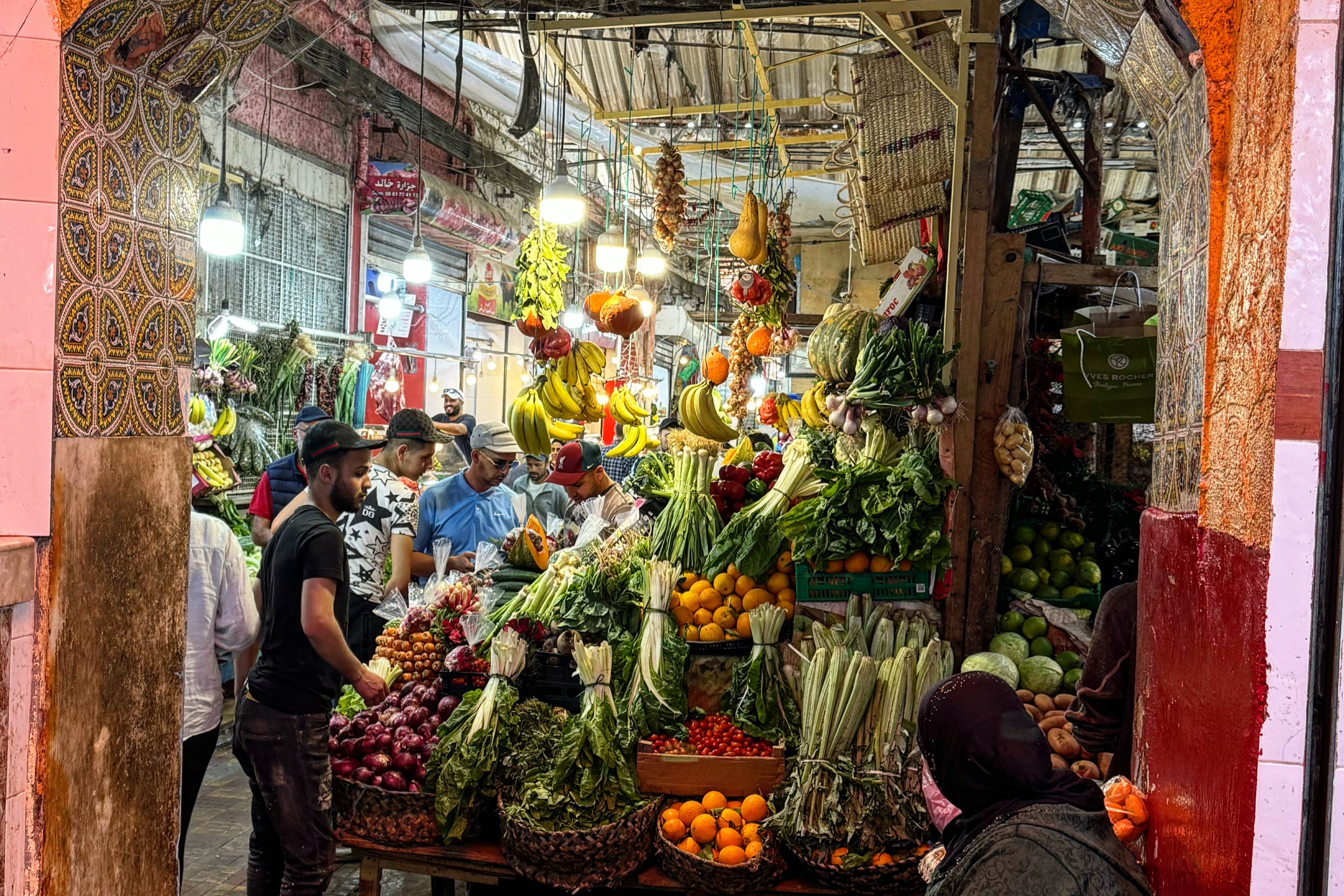
Read more: Tangier’s new dawn – how Morocco’s dissident dive got its mojo back
Just five minutes away, in the central fruit and vegetable market, you’ll spot women who have come in from the countryside with their produce, dressed in the traditional clothes for this region. They wear distinctive red-and-white-striped shawls wrapped around their waists like aprons, and large, wide-brimmed conical hats decorated with multicoloured embroidery and, sometimes, extra pompoms. The fresh homemade goat’s cheese is a local speciality. It is sold in a big wheel, wrapped in dark green leaves, and has a tangy, salty taste. Devour it with freshly baked bread and chilli olives.
Tangier’s not-so-secret gem is the Art Deco cinema on the main square. The square is large and open with a small garden in the middle leading to the pink mosque. Opposite the cinema is a row of imposing French-style colonial buildings, which have been transformed into cafes and restaurants. The cinema itself is classic white Art Deco, with the name “Cinema Rif” picked out in red. Inside, it is an antique-lover’s dream of brass light fittings and gold-speckled mirrors – it’s worth a visit just for a peek at the lavish interior.
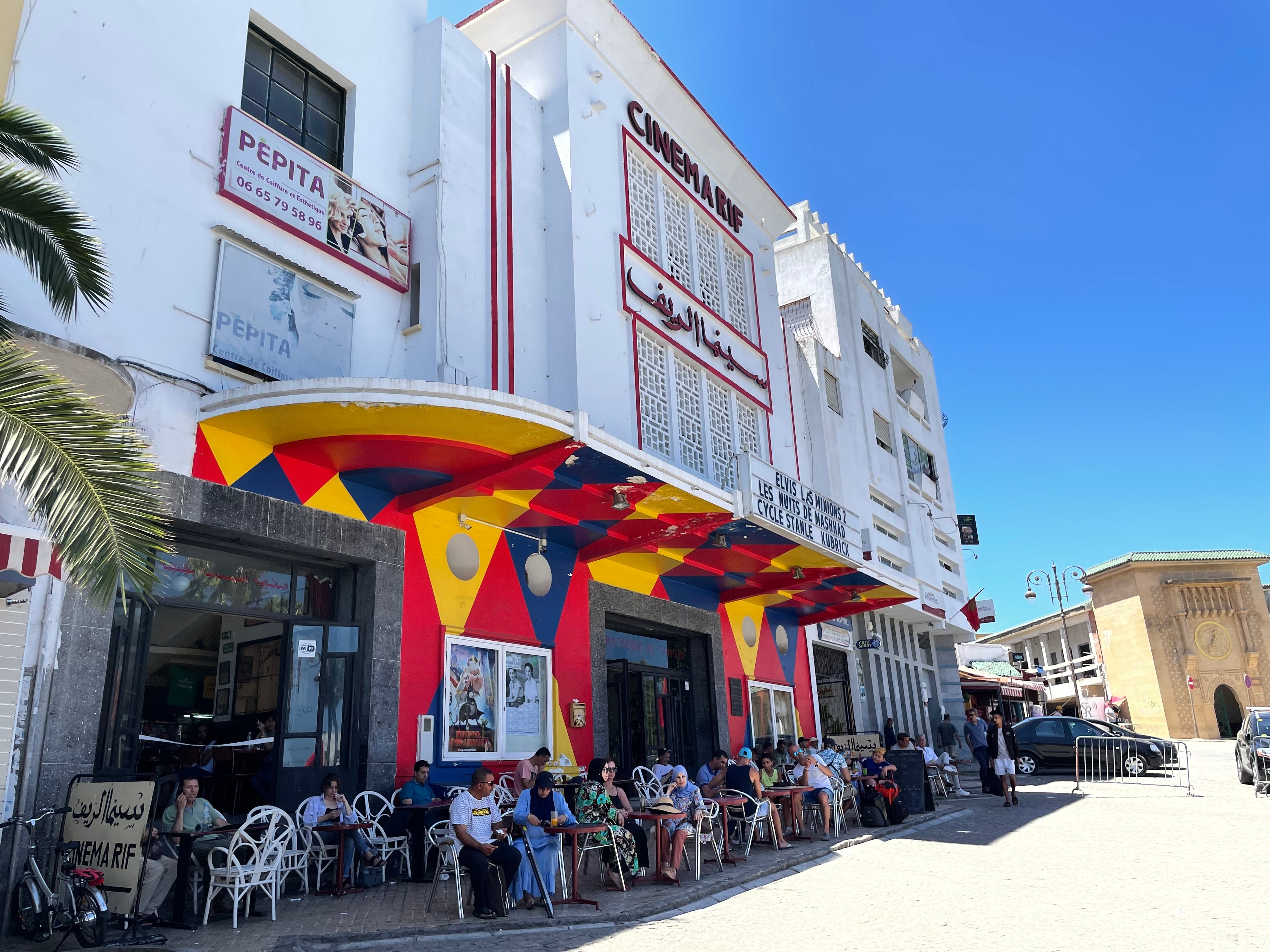
As an independent cinema, its programme is joyously eclectic, but always check in advance what languages the films and subtitles are in. You don’t want to arrive ready to practise your French only to find that the film is in Serbo-Croat with Spanish subtitles.
Travellers will find some excellent public beaches around Tangier, where you can swim and lie out in the sun sipping a tangerine juice (the fruit is named after the city). If you fancy something a little more exclusive, two hours along the coast is Tamuda Bay. Nestled in its natural curve is a select group of hotels and holiday homes that are perfect for those seeking a more upmarket experience. The beach gives out onto shallow water, making it perfect for children, and all the usual beach sports are available, from fishing to jetskiing.
Read more: Where to go on holiday in Morocco, from Marrakech to Fes
One of the first-rate hotels on offer is the St Regis La Bahia Blanca Resort, which opened in November 2023. Here, your room comes complete with its own personal butler. The restaurant serves a wide variety of Moroccan and European Mediterranean dishes – the squid ink risotto is particularly memorable. The hotels on this patch all serve a selection of wines including the famous local vin gris, or grey wine, which is made from cinsault and grenache grapes and is much more appetising than its name suggests.
Chefchaouen
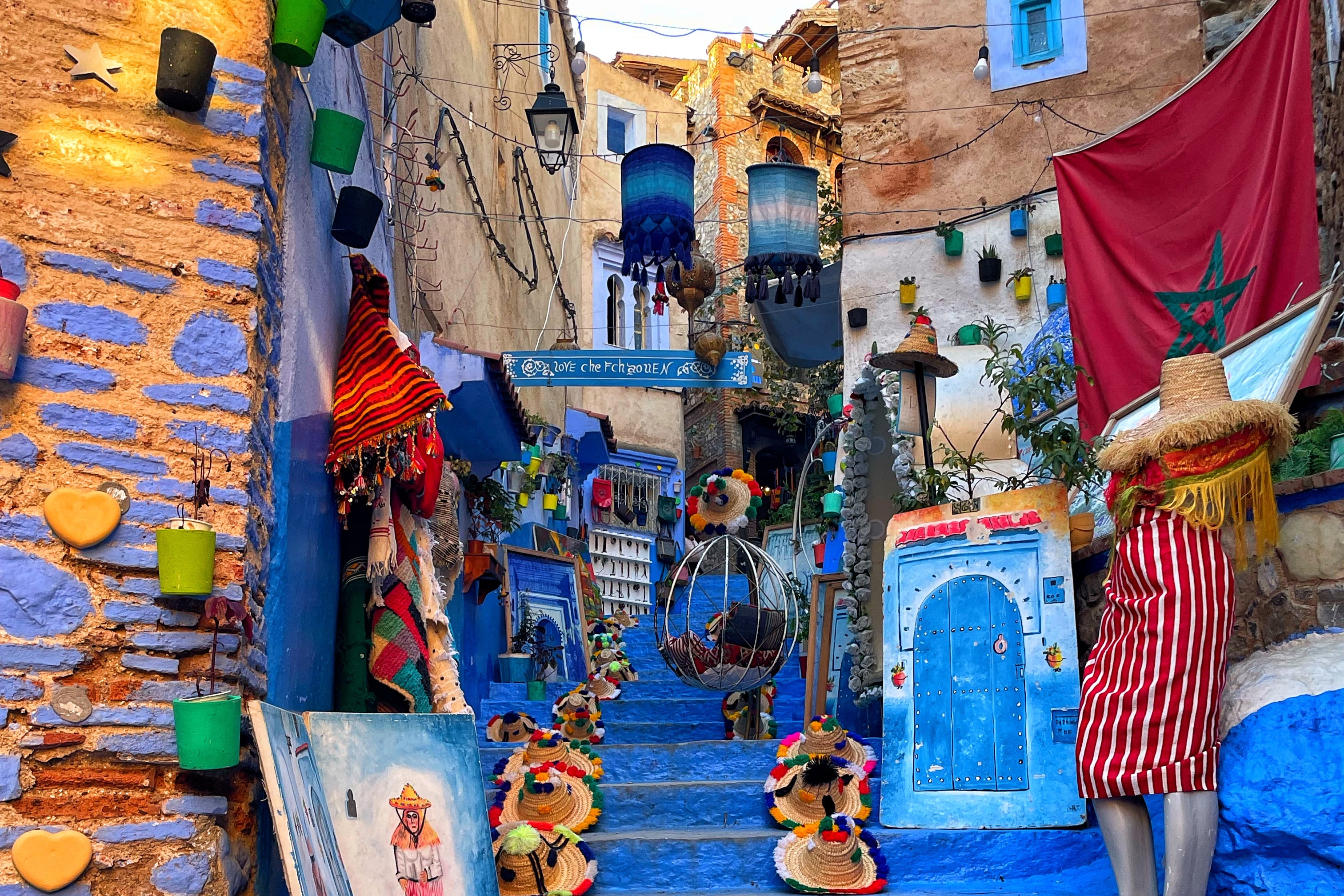
Morocco has a turbulent historical relationship with Spain, its Mediterranean neighbour, but that relationship birthed one of the most extraordinary cities in north Africa: Chefchaouen, which lies inland at the head of the Rif mountains.
It is known as the “Blue Pearl” for a reason: houses here are typically painted in a shade somewhere between cobalt and turquoise, and the whole city glows with an otherworldly light. It is said that the colour was originally brought over in the 1500s, when Jews escaping the Spanish Inquisition fled to Chefchaouen. The story goes that there was a Jewish religious tradition of weaving prayer shawls with an ancient natural blue dye to remind people of the presence of God. The refugees kept this tradition alive by painting their houses the same blue.
Read more: The bustling African city four hours from London hoping to break records
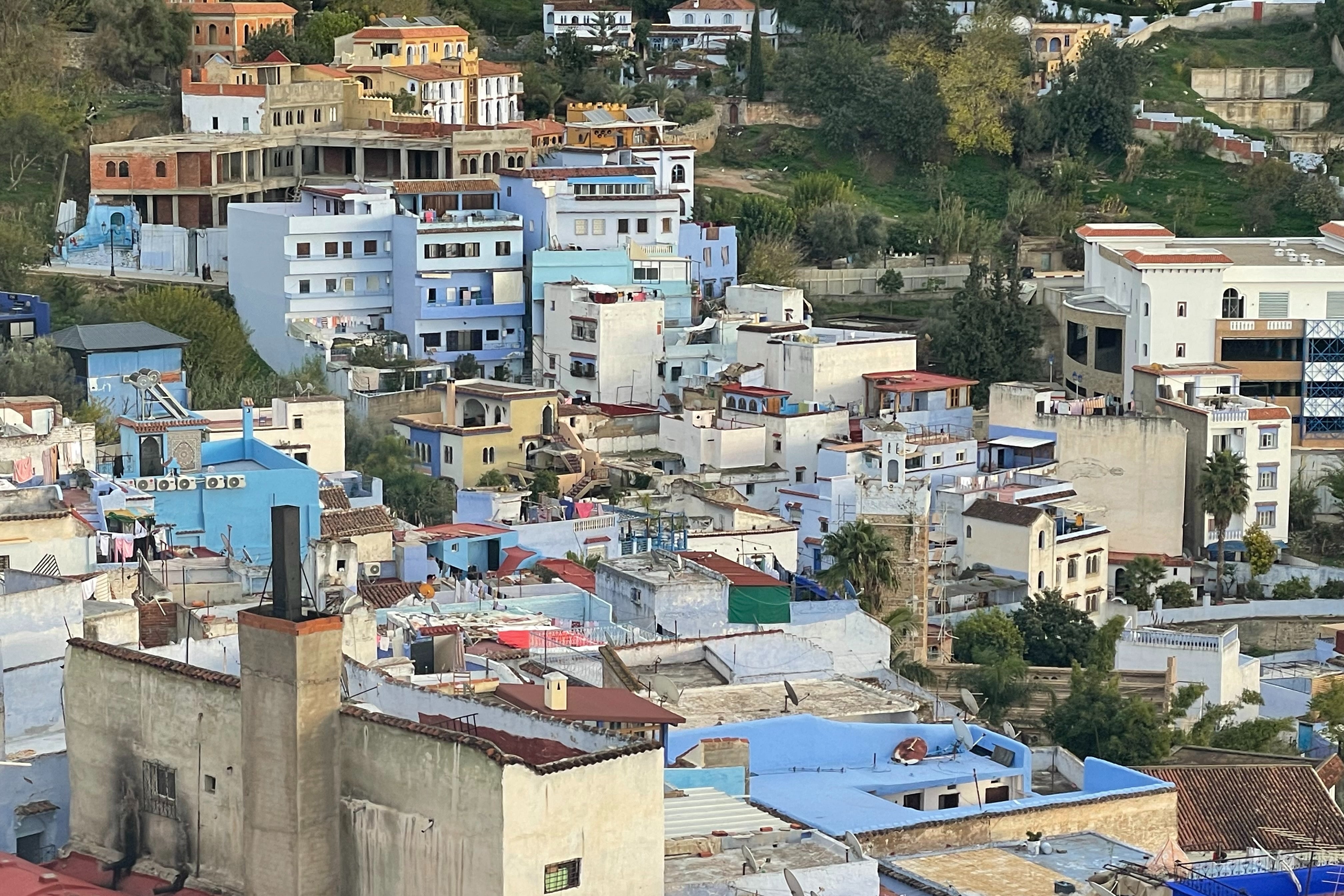
It takes an age to explore the old medina, as each corner yields an Instagram moment: Chefchaouen is somewhere where you get greedy for photographs.
A walk up to the Spanish Mosque offers fantastic views of the whole city. From there, cross over the Ras El Maa River, where local women still do their washing. The trail then goes uphill, not too steeply, on a little path spiked with cactus fruit plants, which are delicious to eat when in season. Within 10 minutes you are in typical Mediterranean countryside and making way for farmers with their donkeys and herds of sheep going up to pasture. Back down in the main square, smiling street sellers push handcarts with freshly made ice cream to cool you down. You’ll be glad you came.
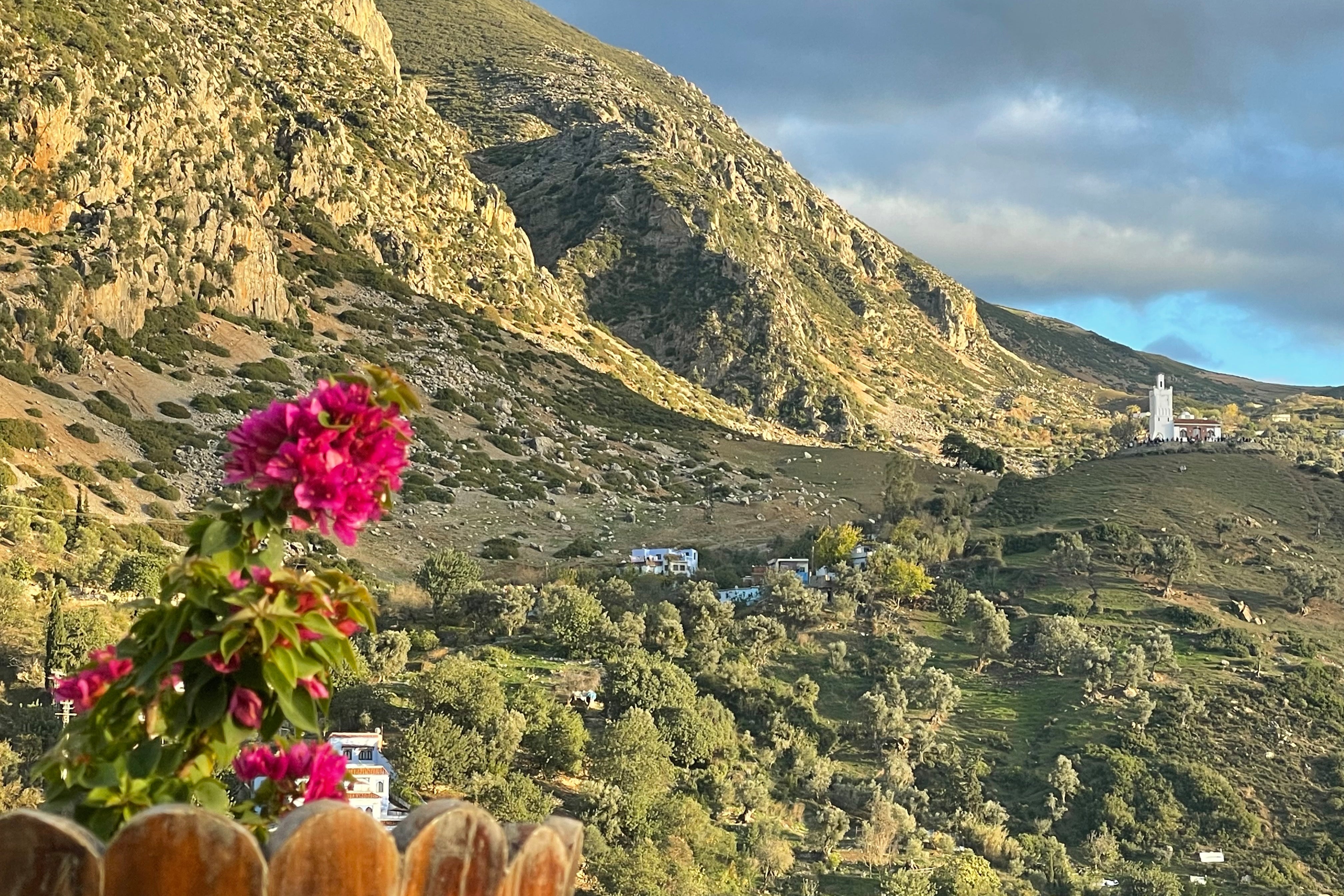
How to get there
There are direct flights to Tangier from London with Ryanair and Air Arabia, or you can travel down through Spain by train and take the ferry across the Straits.
Supratours/CTM buses will transport you between Chefchaouen and Tangier, and you can get a grand taxi or bus to Tamuda Bay.
Car hire or hiring a local driver are other good options. No visa is necessary for Morocco.
Read more: Overland from Margate to Marrakech – An art-filled journey across France and Spain



 Africana55 Radio
Africana55 Radio 
